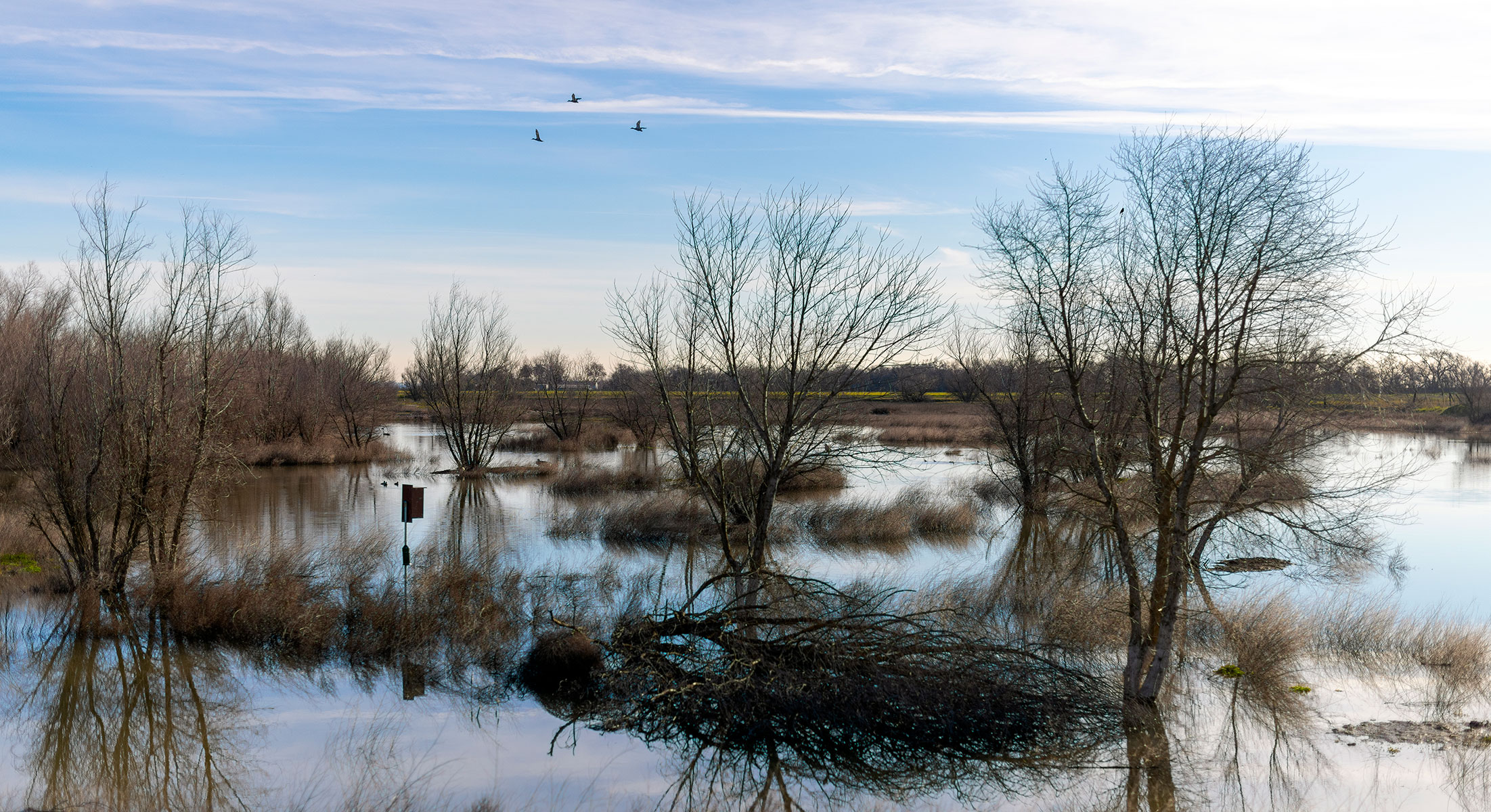Mar 1, 2022
From dump to wetland

CWA turned an old landfill pit into a productive wetland. Photo by Holly A. Heyser
By Julie Do, Assistant Editor
(Originally published in the Spring 2022 issue of California Waterfowl)
California Waterfowl has finished a 20-acre restoration effort at the Woodland Regional Park to turn an old landfill pit with once-poor habitat quality into a productive wetland surrounded by riparian areas and native vegetation.
The landfill site closed in 1981. From the 1980s until the early 2000s, the city leased the site for various uses including for equestrian events, a BMX track, and an aeromodeller recreational aircraft field. It’s the only park site owned by the City of Woodland with diverse natural habitat, and it lies adjacent to other lands with conservation easements to form a larger contiguous protected landscape.
As part of a huge project to turn the city park into a 160-acre science and nature preserve called the Woodland Regional Park Preserve, CWA had been enhancing and restoring the wetland area.
CWA’s restoration work was designed to imitate the natural flooding regime and habitat types along the rivers and creeks of the Central Valley floor. It will provide habitat for waterfowl, raptors, migratory and resident shorebirds, and riparian and grassland songbirds.
CWA installed a new well that provides about 1,000 gallons per minute of water for the project; planted native trees, sedges and grasses; installed a lift pump and pipeline for water management and drainage; and performed earthwork to make the pond similar to naturally occurring riparian floodplain wetlands.
The restoration effort, which began in 2019, was made possible through a $511,000 award from the Wildlife Conservation Board as part of a cooperative project with the city of Woodland, Tuleyome and the Explorit Science Center – a non-profit in Yolo County dedicated to bringing engaging hands-on science to both children and adults.
Funding for our work came from multiple sources, including bond measures approved by voters to help preserve and protect California’s natural resources, and the Habitat Conservation Fund. We also contributed additional private foundation money.
The habitat enhancement is one part of a larger vision of a science and nature park that will let the public interact with nature in a new way. The Woodland Regional Park Preserve will include a science center, learning labs, classrooms, lecture halls, a banquet room and indoor and outdoor spaces for visitors to participate in education programs and tours.
The preserve’s proximity to residential areas and multiple schools less than two miles away provides a great benefit: The location is easily accessible for students and helps overcome the barrier of transportation costs to give students outdoor education (see News Briefs on page 54 for more about how transportation costs can keep kids out of nature).
Having a Science and Nature Education Center located in such a high-traffic city-owned park can encourage kids to get outside, learn about wildlife and see how hunting plays an important role in conservation.


